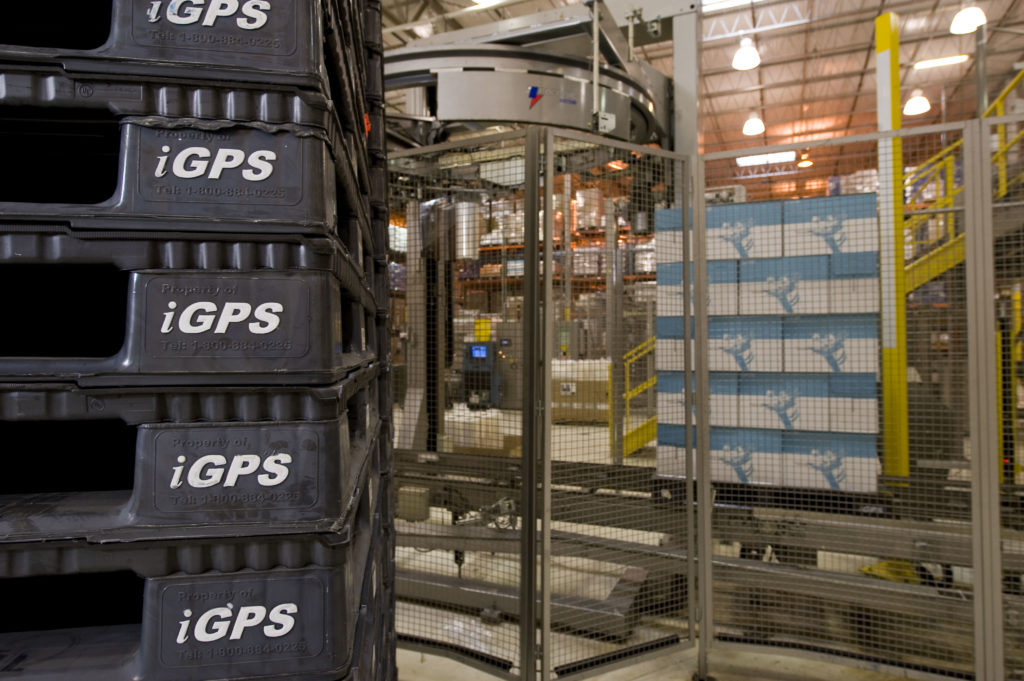Key Takeaways
- Effective warehouse management and inventory operations are vital components of supply chain success.
- Warehouse inventory management involves the control and oversight of goods flowing in and out of a facility.
- Done effectively, this cultivates an environment in which both stock and space are managed strategically.
- Best practices for warehouse management include optimizing layouts, enabling accurate inventory tracking, and conducting regular audits and cycle counts.
- Embracing automation, establishing safety protocols, and leveraging data analytics are also central to supply chain success.
Effective and efficient warehouse management and inventory operations are vital components in the success of the modern supply chain. As consumer demands increase and supply chains become more complex, enterprises must focus on optimizing their warehouse processes to remain competitive in the market. Efficient warehouse operations not only ensure timely customer order fulfillment but also improve accuracy, reduce costs, and enhance safety in the workplace. Following key best practices for warehouse management and inventory operations can help organizations boost their productivity and set themselves up for long-term success.
What Is Warehouse Inventory Management?
Warehouse inventory management involves the control and oversight of goods flowing in and out of a warehouse or other logistics facility. The process includes tracking inventory levels, optimizing warehouse layout, managing stock locations, and ensuring that order fulfillment is both accurate and timely. Not only is this function crucial to avoiding stockouts and reducing excess inventory, but it also makes sure that customers receive the right products at the right time.
Effective inventory management does more than just keep count of items; through the integration of systems, workflows, and trained staff, it cultivates an environment in which both space and stock are managed strategically.
Best Practices for Warehouse Management
Optimize Warehouse Layout
A well-organized warehouse layout can significantly enhance a facility’s operational efficiency. Start by designing separate zones for receiving, storage, picking, packing, and shipping. Fast-moving items should be placed in easily accessible areas to reduce travel time. Use vertical space effectively and ensure that aisles are wide enough to accommodate AGVs and other equipment. A logical and organized layout supports smooth flow of materials and minimizes costly bottlenecks.
Implement a Robust Warehouse Management System (WMS)
A warehouse management system (WMS) is the backbone of any modern inventory operation. These systems enable real-time visibility into inventory while automating routine processes and helping track orders from receipt to shipment. An ideal WMS is one that integrates well with an existing supply chain system and supports scalability as operations grow. A WMS can also improve accuracy and enable faster, more informed decision-making.
Enable Accurate Inventory Tracking
Thanks to real-time inventory tracking, supply chain managers are always able to know what is in stock, where it is located, and when it’s time to reorder. Barcoding, RFID, and QR code technologies can help automate tracking at the SKU level and reduce manual data entry errors, allowing movement history to be monitored and trends and inefficiencies to be identified. This accuracy ultimately helps prevent stockouts, overstocking, and potentially costly write-offs.
Have Clear Policies for Inventory Control
It’s important to set clear policies for inventory control, including minimum and maximum stock levels and reordering thresholds. Where applicable, implement a FIFO (First In, First Out) or FEFO (First Expired, First Out) policy, especially for perishable goods. Having strong control mechanisms in place reduces waste while improving cash flow.
Conduct Regular Audits & Cycle Counts
Periodic audits and cycle counts help ensure that inventory records match physical stock in the facility. Unlike full inventory counts that disrupt operations, cycle counting enables verification to occur in more manageable segments. Frequent counts of fast-moving and high-value items helps maintain accuracy without creating disruptions in the flow of daily work, and can assist managers in identifying discrepancies before they become an issue.
Focus on Safety Protocols
In a warehouse or any wok environment, safety is essential for both business continuity and employee well-being. Compliance with OSHA regulations, enforcement of PPE usage, and regular safety training are all vital. Keep walkways clear, inspect equipment regularly, and implement equipment lockout/tagout procedures to minimize the possibility of injuries. Not only does a safer warehouse limit costly downtime and legal exposure, but it’s also the right thing to do for healthy and happy employees.
Embrace Automation
In recent years, automation has rapidly transformed warehouse efficiency. Automated storage and retrieval systems (ASRS), automated storing systems, and robotics reduce labor-intensive tasks while improving speed and consistency. Even simple tasks like automated label printing and sorting can yield measurable and lasting improvements and a strong return on investment.
Leverage Data Analytics
Data analytics makes actionable insights into warehouse performance possible. Key performance indicators like order accuracy, inventory turnover, picking efficiency, and space utilization enable supply chain managers to visualize trends, identify problem areas, and make improvements as needed. Predictive analytics also help managers optimize stock levels while forecasting customer demand, enabling continuous improvement with reduced guesswork.
Ensure Efficient Order Picking
Order picking is among the most labor-intensive activities within a warehouse. Steps to make the process more efficient, including optimizing picking routes, grouping orders by zone, and using different picking strategies (for example, “wave” or cluster picking) where appropriate can all make a significant positive difference. The implementation of pick-to-light or voice picking systems can also enhance sped and accuracy, which ultimately translates into improved customer satisfaction.
Streamline Receiving & Shipping
Receiving and shipping are both critical touchpoints for inventory flow. The standardization of receiving processes, with checklists to inspect incoming goods and verify quantities, can help improve efficiency. For shipping activities, automate label generation, streamline packaging processes, and ensure that carrier pickups are efficiently coordinated. Cutting down on delays at all or any one of these stages supports overall throughput.
Maintain Equipment
Equipment like pallet jacks, forklifts, and scanners are essential for daily operations and must be kept in good working order. A regular schedule of preventive maintenance can help avert unexpected breakdowns and costly repairs or replacements. Keep a maintenance schedule that documents service histories, and make sure staff are trained to report issues early. You’ll be rewarded with safer and more reliable and efficient equipment on the floor.
Invest in Staff Training
At the heart of any warehouse operation is the employees. It is important to invest in continuous training on procedures, equipment use, and of course, safety protocols. A culture of cross-training helps build workforce flexibility and resilience, and recognition of high performers fosters enhanced accountability and pride. Ultimately, a more skilled and motivated workforce is a safer and higher performing one.
Enhance Communication
Clear, consistent, and cohesive communication improves workflow and reduces errors throughout the system. Digital communication tools like mobile apps and warehouse intercoms enable updates and instructions to be relayed in real time. Effective communication during shift changes and equipment handoffs is also vital to preventing misunderstandings and promoting a more collaborative environment.
Manage Storage Capacity
Effective storage management balances both space and accessibility. Use racking systems that are most well-tailored to product types, and assign items to the most efficient storage locations based on their size and weight as well as frequency of access. Continually monitor storage density and be prepared to adjust layouts as inventory changes. Maximizing warehouse capacity without compromising access is a hallmark of operational flexibility.
Use Plastic Pallets
Lightweight, recyclable iGPS plastic pallets offer numerous advantages over traditional wood-block pallets. They are stronger and more durable while being much more resistant to moisture, mold, and germs. Their uniform construction and dimensions, without no producing nails and splinters, improves compatibility with automated systems while reducing wear and tear. The sustainability and safety benefits of plastic pallets far outweigh any disadvantages.
The adoption of key improvements, including layout optimization, efficient inventory tracking, and staff development, can help organizations enhance their productivity and reduce costs while providing superior customer service. With competition and consumer demands only intensifying, continuous improvement is essential for supply chain leaders. Implementing the practices for warehouse management and inventory operations outlined here is a strong and nimble step forward.
FAQ
How is Warehouse Inventory Management Automated?
Warehouse inventory management is automated through a combination of barcode scanning, RFID technology, and warehouse management systems (WMS) that track goods in real time. These tools streamline processes like receiving, storing, picking, and shipping. Automated conveyors, robotics, and AI-driven analytics further enhance accuracy, reduce human error, and boost operational efficiency across the supply chain.
Why Choose Plastic Pallet Pooling Services?
Plastic pallet pooling services, such as those provided by iGPS Logistics, offer a cost-effective and sustainable alternative to owning pallets. Businesses can access high-quality, durable, and recyclable pallets without managing maintenance or storage, reducing capital investment and waste. These services ensure consistent pallet availability, enhance hygiene and durability, and support circular logistics models — all while improving supply chain reliability and environmental performance.
How Can Warehouse Inventories be Organized Effectively?
Effective warehouse inventory organization starts with a logical layout based on product demand and movement frequency. Implementing a WMS helps categorize items, track stock levels, and optimize picking routes. Labeling systems, clear signage, and regular cycle counts support accuracy, while techniques like FIFO or ABC analysis ensure efficient use of space and faster order fulfillment.
Enterprises striving to improve their warehouse management and inventory operations choose durable iGPS plastic pallets for their shipping needs. iGPS pallets are lighter and safer for workers, with integrated RFID technology to enable real-time visibility and tracking. For more information, contact us at 1-800-884-0225, email a specialist at switch@igps.net, or visit our contact page.



